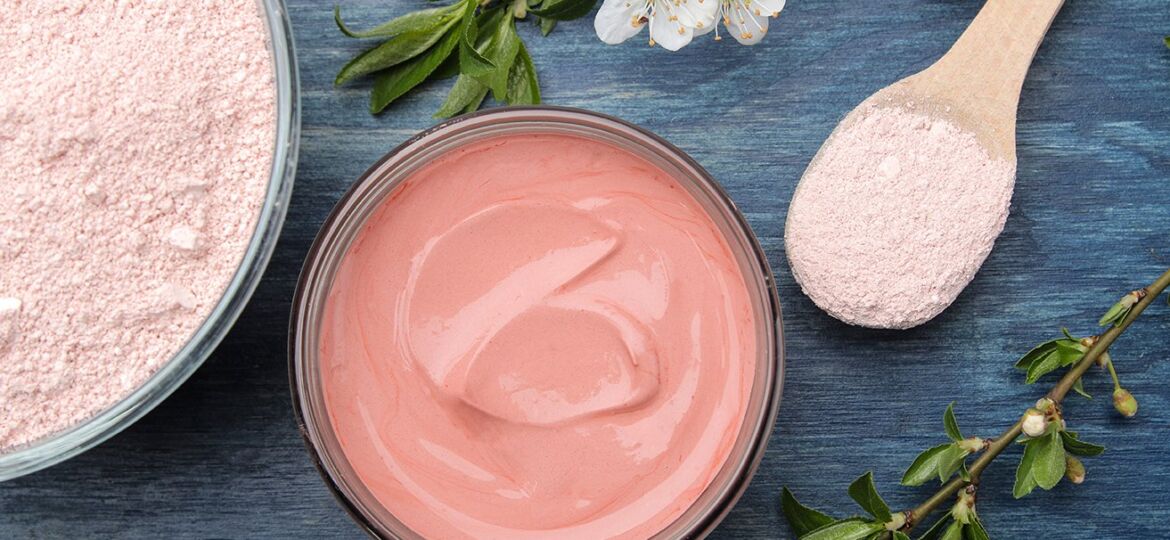
Janine Grace
When someone mentions clay, what do you think of? A green mask that dries to the texture of tissue paper? A thick, pliable substance that provides a sensory experience and sculpts to your will on a spinning wheel….and then hardens? Or how about Play-Doh – that ever-lovable substance that when you forgot to put the cap back on, becomes a cylindrical slab of concrete?
What if I told you that there is a clay that goes against its namesake? Instead of having the drying force of a desert, it can actually help your skin retain its natural moisture? A clay that, once applied, gives your skin the vitamins and minerals it needs to both endure and rejuvenate itself?
If you don’t believe me, please say, “hello” to Pink Clay.
What is Pink Clay?
Pink Clay typically results from Kaolin, a clay that is white in nature, but can also be found in shades of pink or red, depending on the level of Iron Oxide it contains. It has a unique chemical composition that sets it apart from other clays and allows skincare experts to confidently claim it to be the mildest of all clay types.
Types of Pink Clay
Pink Clay is harvested from two distinct areas of the world, both of which give the clay distinct properties. French Pink Clay contains Iron, Illite, Montmorillonite and Calcite, whereas Australian Pink Clay contains Silica, Magnesium, Selenium and Zinc. These differing elements mean that depending on the origin of the Pink Clay you are using, you will experience different skin benefits.
French Pink Clay is excellent for stimulating circulation, exfoliating, and un-clogging pores by reducing excess oil and drawing out toxins. Australian Pink Clay is a natural anti-inflammatory that helps seal in moisture, meaning it is the better choice for those prone to eczema and irritated skin. Also, Australian Pink Clay has natural fatty acids that help skin look younger, while also working to create a barrier to the elements and heal damaged areas.
It used to be that French Pink Clay was more exclusively reserved for spas, while Australian Pink Clay was the type found in over-the-counter skincare products, but this has been shifting in recent years. The great news is that, whether you are using French or Australian Pink Clay, you are gifting your skin with an added layer of protection to lock in moisture and protect from the free radicals in your environment!
Pink Clay for Smooth, Silky Skin
There is a reason Pink Clay is claimed to be the mildest of clay types, and it is simply this: instead of aggressive adsorption of impurities from the skin by also removing skin’s protective layers, Pink Clay gently removes impurities through mild exfoliation and only absorbs excess oil, keeping the protective layer of sebum intact. This means that Pink Clay works two ways at once and is both a cleanser and a protective agent!
Dry Skin? Pink Clay to the Rescue!
Pink Clay has a natural, gentle exfoliation factor due to its texture that tenderly sloughs dead cells and dry patches from the surface of the skin without over-irritating healthy skin surfaces. In addition, the Silica in Australian Pink Clay is an excellent anti-inflammatory that preserves moisture, and the Montmorillonite in French Pink Clay is absorbent without removing natural moisture. This means that no matter which Pink Clay you chose, you will ensure that your skin retains its natural moisture and glows from the inside-out!
In addition, the natural elements in Pink Clay do a great job protecting the skin from free radicals, ensuring skin stays plumped, balanced and clear.
Oily Skin? Try Pink Clay before anything else!
Because Pink Clay is so good at helping skin retain its natural moisture, one might think that those with oily skin should steer clear completely clear of using it. But that’s absolutely not true!
Pink Clay is the mildest of all clays because it is balanced. The same exfoliation factor that removes dry skin cells will allow oily skin to breathe. Silica will help oil-producing glands to relax, while the moderately absorbent nature of Pink Clay will ensure a balanced complexion instead of overly drying skin that likes staying moist.
The squeaky-clean feeling that other clays leave skin with can actually do more damage to oily faces in the long-term, signaling skin to produce even more oil than it was before. Because Pink Clay is so gentle, it should be the go-to before trying anything more aggressive for oil production issues. By choosing Pink Clay, you will ensure that your skin’s sebum, pH levels and dermis are left intact and in their healthiest state.
Is there anything Pink Clay isn’t good for?
Honestly? Probably not! Pink Clay should be a first resort to address a multitude of skin issues before attempting to find results from harsher products. Pink Clay gets us to our #skingoals by addressing all our major skin concerns at one time: hydration, balance, refining pores, evening-out complexion, protection from the environment and improved elasticity. There is literally no more that can be asked from a skincare product!
Now that I’ve told you about the incredible benefits that Pink Clay provides, I’m sure you are wondering where you can find it. You don’t have to search far – look no further than our Butter and Lye Exfoliating Pink Clay Face and Body Soap; $8. Treat yourself today to this delightful, creamy bar with gentle exfoliation and discover what the Pink Clay hype is all about.